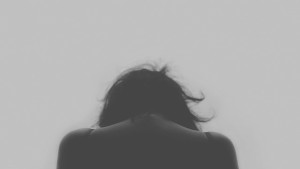What is Bipolar Disorder?
 Bipolar disorder (also known as manic–depressive disorder or manic depression) is a mental/mood disorder that is typified by its signature mood swings. The person dealing with bipolar disorder symptoms has mood swings that cycle from a frenzied, energetic state of being to a low, self-deprecating depressed outlook on life.
Bipolar disorder (also known as manic–depressive disorder or manic depression) is a mental/mood disorder that is typified by its signature mood swings. The person dealing with bipolar disorder symptoms has mood swings that cycle from a frenzied, energetic state of being to a low, self-deprecating depressed outlook on life.
During a manic cycle, the individual will act as though everything is at its best. They are energetic, highly-strung, impulsive, and believe they can conquer the world. Poor and rash decisions are often made during this mania state due to unrealistic expectations about life in general. The person suffering from bipolar disorder then cycles down into a major depression. During this stage, the person is incredibly sad, has low self-esteem, feels hopeless, feels worthless, and may contemplate suicide.
There are a few different classifications of bipolar disorder. They are as follows:
- Bipolar I Disorder – The individual experiences at least one manic event in their lifetime.
- Bipolar II Disorder – It is similar to Bipolar I Disorder but with one or more hypomanic episodes (a lower and less intense level of mania) and one or more depressive occurrences.
- Cyclothymia – Less intense than Bipolar I Disorder and Bipolar II Disorder. There are multiple hypomanic incidents with periods of lower grade depression.
- Rapid Cycling – A person experiences four or more episodes of mania and/or depression in one year.
- Mixed Bipolar – The sufferer experiences both the mania and depression at the same time or in quick sequence.
- Bipolar Disorder NOS (Not Otherwise Specified) – This classification covers any and all other versions of bipolar disorder that do not fall within the specific subtypes.
Bipolar disorder can be, at times, difficult to diagnose. The symptoms of bipolar disorder can appear to be different mental disorders. The opposite is true as well. Many symptoms that appear to be a different mental disorder can actually be bipolar disorder. This often leads to delays in a correct diagnosis and thus the bipolar disorder goes untreated and becomes more intense. It is important to recognize the signs of bipolar disorder because it can lead to a more accurate diagnosis, treatment and help the individual dealing with the disorder to better manage the disorder and live a productive balanced life.
Statistics on Bipolar Disorder
 Joseph Goldberg and Jessica Garno recently reported a history of severe trauma in 51% of a cohort of 100 adults with bipolar disorder. 35% of these individuals developed comorbid post-traumatic stress disorder (PTSD) compared with 13% in those without childhood trauma.
Joseph Goldberg and Jessica Garno recently reported a history of severe trauma in 51% of a cohort of 100 adults with bipolar disorder. 35% of these individuals developed comorbid post-traumatic stress disorder (PTSD) compared with 13% in those without childhood trauma.
These investigators had previously found that these same adults with severe psychosocial adversity in childhood also had an earlier age of onset and a more severe course of their bipolar illness than those without such a history [1]. Other statistics that pertain to bipolar disorder include:
- With bipolar disorder, which affects approximately 5.7 million American adults–or about 2.6 percent of Americans age 18 and older in a given year–the average age at onset for a first manic episode is during the early 20s [2].
- Mental health disorders account for four of the top 10 causes of disability in established market economies, such as the U.S., worldwide, and include: major depression (also called clinical depression), manic depression (also called bipolar disorder), schizophrenia, and obsessive-compulsive disorder [2].
- Community studies estimate lifetime prevalence of bipolar spectrum disorders to be 0% to 3% among adolescents, depending on the assessment measure and the range of the spectrum considered (e.g., Bipolar II, cyclothymia). Prevalence of child-onset bipolar is not well established due to debate about the appropriate definition of caseness (or boundaries of diagnosis) among preadolescents [3].
- Women are 50% more likely than men to experience a mood disorder over their lifetime [4].
- Non-Hispanic blacks are 40% less likely, and Hispanics are 20% less likely, than non-Hispanic whites to experience a mood disorder during their lifetime [4].
Causes of Bipolar Disorder
Bipolar disorder is understood to be caused by problems within specific brain pathways and an imbalance of the neurotransmitters serotonin, dopamine, and noradrenalin. Studies have shown that bipolar disorder can run in families and therefore be genetically passed on to others. Other studies provide evidence that one’s surroundings and environment can play a major role in developing bipolar disorder. It is suggested that an individual’s social environment can interact with their genetic disposition and produce an onset of bipolar episodes. The life events and personal relationships can contribute to the likelihood of beginning bipolar disorder. It is also reported that many adults with bipolar disorder reported traumatic and/or abusive occurrences as a child. In addition to bipolar disorder, the person will often exhibit comorbid (co-occurring) mood disorders such as ADHD, eating disorders, obsessive-compulsive disorder (OCD). They will also often engage in drug and alcohol abuse and/or promiscuous sexual activities.
Signs and Symptoms of Bipolar Disorder
Bipolar disorder is a complex and difficult mental disorder to diagnose and understand. It is often misdiagnosed as other mental disorders or other mental disorders are misdiagnosed as being bipolar disorder. Other mental disorders such as borderline personality disorder, attention deficit hyperactivity disorder (ADHD), and schizophrenia have similar crossing symptoms and are examples of mental disorders that are often mistaken for bipolar disorder. The primary symptom is the intense mood swing from being extremely lively and fast paced to being tremendously depressed. A few other symptoms that may indicate a person is dealing with bipolar disorder include:
- Increase in energy
- Sadness
- Decreased need for sleep
- Depression
- Pressured speech
- Hopelessness
- Anxiety
- Euphoria
- Hyperactivity
- Disturbed sleep patterns
Bipolar Disorder Effects
 Living with a bipolar disorder can be quite exhausting. A person dealing with this mental disorder has difficulties living a normal life if it goes untreated. If left untreated, the psychological and physical effects will intensify and become worse. The mania and depression cycles are hard on all involved. If the symptoms of bipolar disorder are recognized, it can help lead the sufferer to seek help. Some of the psychological effects include:
Living with a bipolar disorder can be quite exhausting. A person dealing with this mental disorder has difficulties living a normal life if it goes untreated. If left untreated, the psychological and physical effects will intensify and become worse. The mania and depression cycles are hard on all involved. If the symptoms of bipolar disorder are recognized, it can help lead the sufferer to seek help. Some of the psychological effects include:
- Euphoria
- Sadness
- Psychotic
- Guilt
- Anger
- Isolation
- Hopelessness
- Psychosis
- Hallucinations
- Morbid suicidal thoughts
- Depression
- Extreme mood changes
- Anxiety
Some of the physical results are:
- Increase in energy
- Decreased need for sleep
- Pressured speech
- Low attention span
- Indulge in substance abuse
- Increased sexual drive
- Disturbed sleep patterns
Negative social consequences:
- Relationships with loved ones are damaged or lost
- Can lead to substance abuse
- Career can be damaged
- Can lead to promiscuity
- Can become reclusive
- Self esteem can be lost
- Financial stability can be affected
Bipolar Disorder Treatment
In the past, bipolar disorder has been designated to cover a vast multitude of mental disorders. This is because some of symptoms are similar to other mental disorders such as attention deficit hyperactivity disorder (ADHD), schizophrenia and borderline personality disorder. Bipolar disorder is often misdiagnosed and the disorder is not correctly treated. This is an example of why it is important to find professional help in dealing with bipolar disorder. A bipolar disorder treatment center can help determine the accurate mental disorder diagnosis and implement the proper pharmacological and behavioral treatments.
References:
[1]: http://www.thelancet.com/journals/lancet/article/PIIS0140-6736(06)68450-X/fulltext#article_upsell
[2]:http://www.hopkinsmedicine.org/healthlibrary/conditions/mental_health_disorders/mental_health_disorder_statistics_85,P00753/
[3]: http://www.nimh.nih.gov/statistics/1BIPOLAR_CHILD.shtml
[4]: http://www.nimh.nih.gov/statistics/1ANYMOODDIS_ADULT.shtml
The opinions and views of our guest contributors are shared to provide a broad perspective of addictions. These are not necessarily the views of Addiction Hope, but an effort to offer a discussion of various issues by different concerned individuals.
We at Addiction Hope understand that addictions result from multiple physical, emotional, environmental and genetic factors. If you or a loved one are suffering from an addiction, please know that there is hope for you, and seek immediate professional help.
Reviewed and Approved by Jacquelyn Ekern, MS, LPC on February 25, 2020
Published April 15th, 2013, on AddictionHope.com
